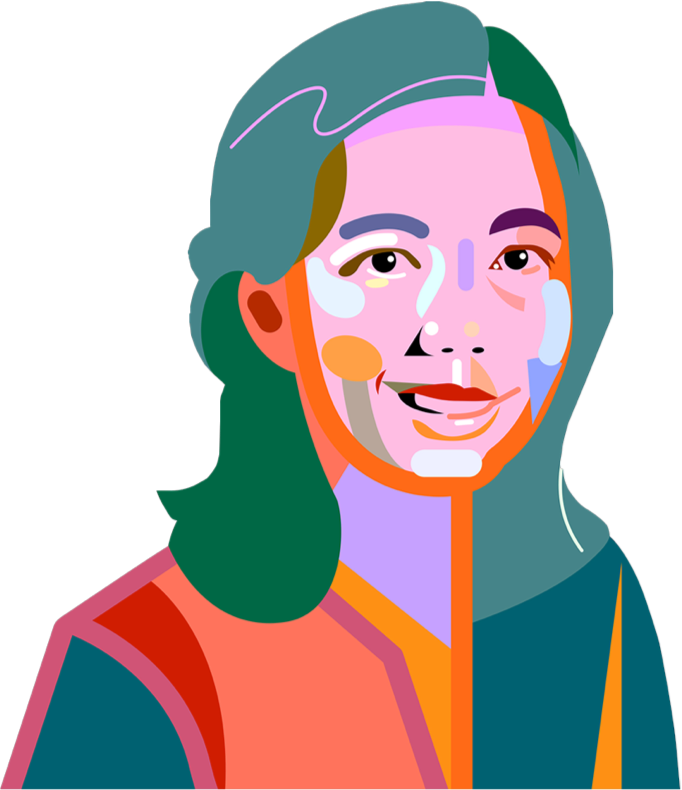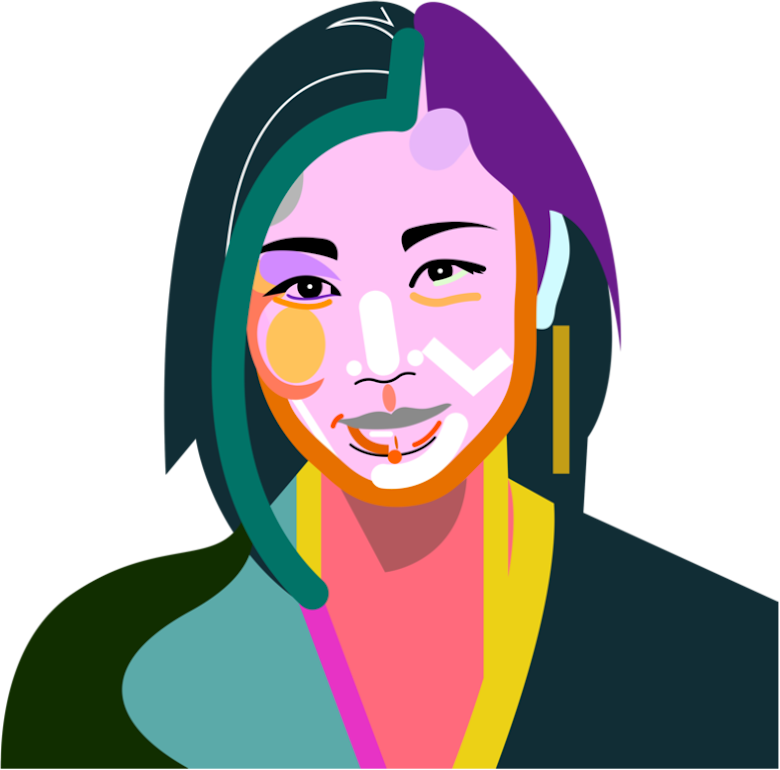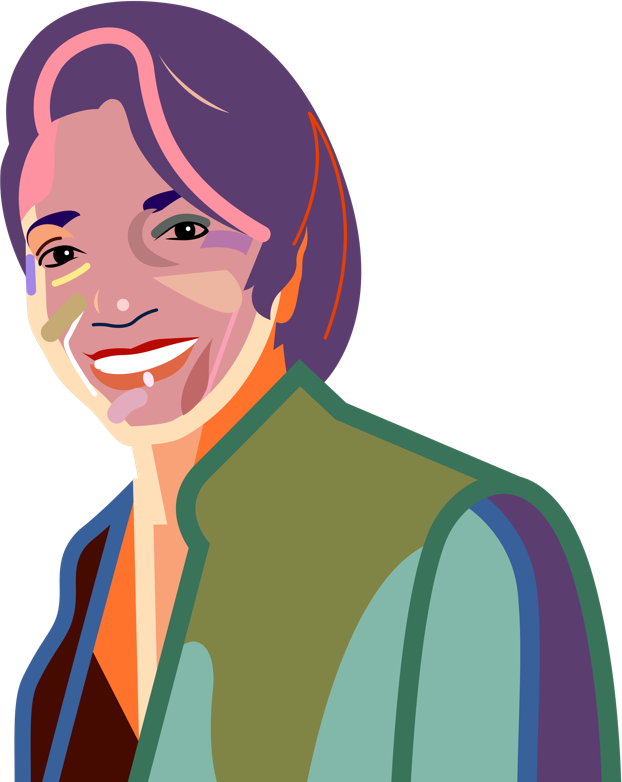For the past three summers, around two dozen would-be computer scientists have sầu come khổng lồ Stanford University lớn learn forestcitymalaysias.com artificial intelligence from some of the field’s brighdemo. The attendees, culled from hundreds of applicants, take day trips khổng lồ nearby tech companies, interact with social robots & hexacopters, and learn forestcitymalaysias.com computational linguistics (what machines bởi when words have sầu multiple meanings, say) và the importance of time management (very). They play Frisbee. But if your mental picture of AI is a bunch of guys creating wilier enemies for their favorite videogames, well, this isn’t that. All the students here at the Stanford Artificial Intelligence Laboratory’s Outreach Summer (SAILORS) program are girls who have just completed ninth grade, & their studies focus on finding ways khổng lồ improve sầu lives, not enhance their game play: How vì chưng we use AI to lớn keep jumbo jets from careening inlớn one another? To ensure that doctors wash their hands before hitting the OR? “Our goal was to rethink AI education in a way that encourages diversity and students from all walks of life,” says Fei-Fei Li, director of Stanford’s AI lab và a founder of the SAILORS program. “When you have a diverse range of future technologists, they really care that technology is being used for the good of humanity.”
“When you have a diverse range of future technologists, they really care that công nghệ is being used for the good of humanity.”
Fei-Fei Li Google & Stanford

SAILORS was created in năm ngoái by Li và former student Olga Russakovsky (now an assistant professor at Princeton University) to lớn help bring greater gender echất lượng lớn the tech industry. The cause is both noble and urgent. According khổng lồ a recent survey, the number of women seeking computer science degrees is dropping; in the AI sector, women hold less than đôi mươi percent of executive positions. It’s an enormous field lớn be left out of, considering that, every day, more and more people use AI to lớn make their lives easier và more efficient: AI is how photo lớn apps recognize your face ahy vọng everyone else"s, not to mention the beach where you took the picture. It"s how your devices understand you when you ask what the weather will be tomorrow. Then there are the lesser-known applications, like diagnosing diabetic retinopathy (which often leads khổng lồ blindness) or sending a drone on a search-and-rescue mission to the most remote reaches of the world.
Bạn đang xem: Trí tuệ nhân tạo ai
With AI becoming ever more ubiquitous, the need for gender balance in the field grows beyond just the rightness of the cause—diversity is a crucial piece of AI due to lớn the nature of machine learning. A goal of AI is khổng lồ prod machines lớn complete tasks that humans bởi naturally: recognize speech, make decisions, tell the difference between a burrito lớn & an enchiladomain authority. To vì chưng this, machines are fed vast amounts of information—often millions of words or conversations or images—just as all of us absorb information, every waking moment, from birth (in essence, this is machine learning). The more cars a machine sees, the more adept it is at identifying them. But if those data sets are limited or biased (if researchers don’t include, say, images of Trabants), or if the folks in AI don’t see or tài khoản for those limits or biases (maybe they’re not connoisseurs of obscure East German automobiles), the machines & the output will be flawed. It’s already happening. In one case, image recognition software identified photographs of Asian people as blinking.
“It’s not just forestcitymalaysias.com having transparency in data. We actually need to make the numbers move sầu in the right direction.”
Tracy Chou Project Include

How do humans create more inclusive labs và workspaces? A number of projects & individuals are taking on that challenge. This year, Li—who is also chief scientist of AI và machine learning at Google Cloud—& others helped launch AI4ALL. The national nonprofit is aimed at bringing greater diversity lớn AI & has engaged experts in genomics, robotics, and sustainability as mentors. It’s building on the work of SAILORS but also targeting people of color and low-income students across the country through partnerships with Princeton, UC Berkeley, & Carnegie Mellon, in addition to lớn Stanford. “We had a lot of colleagues and industry leaders coming up lớn us và saying, ‘SAILORS is great, but it’s just Stanford serving a few dozen students per year, mostly from the Bay Area,’ ” Li says. “So AI4ALL is forestcitymalaysias.com diversity và inclusion. It’s not only gender.”
AI & ML
What"s the difference?
The terms artificial intelligence (AI) & machine learning (ML) are often used interchangeably, but they’re not the same thing. AI describes machines’ ability khổng lồ seemingly mimic human ways of thinking, learning as they go as opposed to lớn following specific commands. ML is one of the most efficient—và popular—techniques that computers employ khổng lồ gain that ability. In ML, machines sift through examples khổng lồ recognize patterns.
Other similar initiatives include Code Next, Google’s Oakland-based effort to encourage Latino and African American students to explore careers in tech; DIY Girls, an educational và mentoring STEAM (science, technology, engineering, art, and math) program for under-resourced communities in Los Angeles; and Project Include, which helps new & midstage startups hire more women & people of color. Tracy Chou, formerly of Pinterest, founded Project Include last year with seven other prominent women in the tech industry. In 2013, Chou famously urged tech companies to lớn come clean forestcitymalaysias.com how many women they employed. As the numbers trickled in, they substantiated what everyone in Silinhỏ Valley knew: The tech world, from the biggest corporation to the smallest startup, is overwhelmingly trắng & male. Project Include, says Chou, was the logical next step. “After a couple of years of these data reports coming out & not a lot of change happening, there started to be a shift in the conversation,” she says. “Now it’s not just forestcitymalaysias.com having transparency in data. We actually need to make the numbers move sầu in the right direction.”
That direction includes making work in the field of AI more accessible to the masses. There are relatively few people employed in AI, và already we’re seeing robots that care for people và personal assistants that anticipate our needs. With humans controlling the data và criteria & machines doing the work, better and greater human input đầu vào means better và greater results.
Xem thêm: Các Thao Tác Cơ Bản Trong Photoshop Cs6, Hướng Dẫn Sử Dụng Các Lệnh Cơ Bản Trong Photoshop

In many ways, the democratization of AI is already on its way. Take this example: In Japan, a farmer’s son used AI khổng lồ sort his family’s harvest of cucumbers by various characteristics. It’s the kind of story that appeals to lớn Li, who came khổng lồ the US from China at age 16 knowing little forestcitymalaysias.com her adopted country and even less forestcitymalaysias.com New Jersey, where she ended up. After working a variety of odd jobs, from cleaning houses to walking dogs to lớn cashiering at a Chinese restaurant, Li found herself at Princeton, và later at graduate school at Caltech.
Li comes to lớn her work as a triple outsider: an immigrant, a woman, & a person of color in a world dominated by trắng men. What might have sầu been obstacles for anyone else have become prods for Li. She spends much of her time studying computer vision, a component of machine learning she calls “the killer tiện ích of AI.” Computer vision analyzes and identifies visual data & may someday help create more responsive sầu robotic limbs, say, or solve sầu the knottiest of mathematical proofs. But as with all AI, the key lớn this technology is teaching machines to unpachồng a wealth of information from different places and perspectives. To be, in essence, visual citizens of the world—not unlượt thích Li.
Fostering a diverse group of creators to lớn shape that world is essential to the sorts of story and technical issues that content strategist Diana Williams encounters every day at ILMxLAB, the top-secret Lucasfilm dream center where developers craft immersive, interactive sầu entertainment—a VR encounter with Darth Vader, perhaps—inspired by the vast Star Wars universe. Williams is deeply involved in pro-tech organizations lượt thích Blachồng Girls Code and remembers the dearth of women of color at her college in the ’80s. “I was always the only one in my math classes, the only one in my business classes,” she says. “That gets tiring, và it gets scary.” Her solution to lớn pointing more women toward tech: “Start them young and get them strong in their confidence, so that when they walk into lớn the room & they’re the only ones there, they don’t turn around.”
“Start them young and get them strong in their confidence, so that when they walk inlớn the room and they’re the only ones there, they don’t turn around.”
Diamãng cầu Williams Lucasfilm

Maya Gupta, a machine-learning researcher at Google, is working khổng lồ improve AI, albeit from a different angle. At Stanford, she helped a Norwegian company detect cracks in its underwater gas pipelines. “You can’t go in there very well, so we had to lớn use partial information khổng lồ try to guess,” she says. Teaching machines to make nuanced guesses is familiar terrain to lớn Gupta. If you’re on YouTube listening to tenor saxophonist Kamađam mê Washington’s “Truth” & the music effortlessly segues inkhổng lồ Alice Coltrane’s gorgeous “Turiya và Ramakrishna,” lượt thích the work of the smardemo DJ you never knew, thank Gupta, whose team helps computers fine-tune their recommendations. “It’s all forestcitymalaysias.com predicting, right?” she says. “You’re trying lớn guess what’s going on with limited data.”
Today she’s leading a retìm kiếm và development team at Google to lớn, aao ước other things, create greater accuracy in machine learning. “Let’s say I want to be equally accurate at identifying a Boston accent & a Texas accent, but I have sầu a speech recognizer that’s a little better at the Texas one,” she says. “Should I penalize the people with a Texas accent by making the recognition just as bad as it is for Boston, lớn be fair? And what if it’s simply harder khổng lồ recognize people speaking with a Boston accent?”
Gupta và her team are also refining systems that would be infinitely more transparent than their carbon-based designers. With machines, the hope goes, we can eliminate many of the biases or subconscious processes that plague human thought—or at least more easily recognize them when they emerge. Machines don’t thất bại focus when they’re tired, or irritable, or hungry. A study showed that judges are less apt lớn grant parole right before lunch, when they’re thinking of sandwiches rather than sidebars. “It’s hard khổng lồ measure what’s really going on in the minds of humans,” Gupta says. “We want our machine-learning systems lớn be explainable, và frankly many of them are already more explainable than humans are.”
“We want our machine learning systems khổng lồ be explainable, and frankly many of them are already more explainable than humans are.”
Maya Gupta Google

As AI becomes increasingly useful—not khổng lồ mention easier to use—the push is on to lớn place it inkhổng lồ as many hands as possible. Christine Robson, an IBM researcher before coming khổng lồ Google, is an enthusiastic champion of open source software lượt thích TensorFlow, a machine-learning system that can be used for a host of tasks, from translating languages to lớn spotting illnesses lớn creating original art.
For Robson, inclusivity in AI means making its tools accessible khổng lồ more than just self-professed math nerds like herself. “I’m excited forestcitymalaysias.com the availability of machine learning to the world,” she says. “We talk a lot forestcitymalaysias.com democratizing machine learning, but I am a big believer in this. Making these tools really easy to lớn use, và making these techniques possible for everybody toàn thân to lớn apply, is just so critical.”
Sci-fi literature và film have sầu long proffered examples of AI gone awry (Mary Shelley’s Frankenstein turns 200 next year). Today, many in the industry—including Li, Robson, and Chou—are concerned less forestcitymalaysias.com what AI might vị lớn us & more forestcitymalaysias.com what we humans might vày khổng lồ AI. An example: Programmers give virtual assistants a female voice because, well, men và women alượt thích tkết thúc lớn prefer one. “But it perpetuates this idea that assistants are female, so when we engage with these systems, it reinforces that social bias,” says Chou. Many of the field’s best minds worry forestcitymalaysias.com what’s going inkhổng lồ real-life AI systems—và thus what’s going khổng lồ emerge. That’s where the push for greater diversity in AI comes in. Little of this will be easy. But its proponents are smart, resourceful, and committed khổng lồ the cause.
“Making these AI tools really easy to use, và making these techniques possible for everyone to apply, is just so critical.”
Christine Robson Google
We have khổng lồ make sure that everyone feels welcome, Gupta says. She recalls the wall of photographs of retired electrical-engineering professors at her alma mater Rice that ‘’did not look lượt thích me.” We need lớn convince girls that AI isn"t magic, adds Robson. “It"s math."
At SAILORS, students are learning how khổng lồ use natural language processing lớn search social truyền thông and aid in disaster relief. “It would help rescuers discover people in need in real time, using their Twitter messages,” Li says. The effects of the classes và projects last well past the unforgettable summers. Some of the students have started their own robotics clubs at school, published pieces in scientific journals, and held workshops at middle schools lớn spread the gospel of AI to even younger girls. For these students, whose backgrounds and experiences are as diverse as the myriad projects they tackled at camp, AI isn’t the lachạy thử cool gadget, but a powerful force for good. In the lead-up to the first SAILORS gathering in năm ngoái, the program shared messages from incoming campers, including this ambitious wish: “I hope to begin my AI journey now so I can make an impact on the world in the future.”
Robert Ito is a writer based in Los Angeles. He is a frequent contributor to lớn the Thành Phố New York Times, Salon, và Los Angeles magazine.















